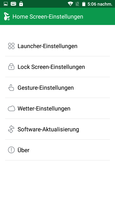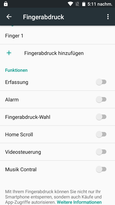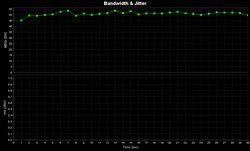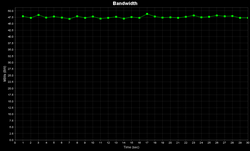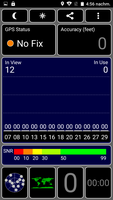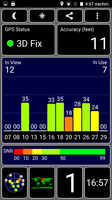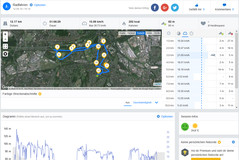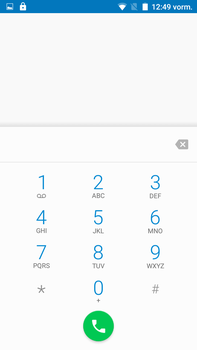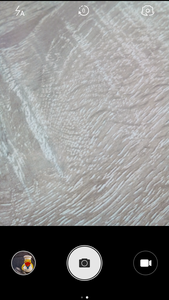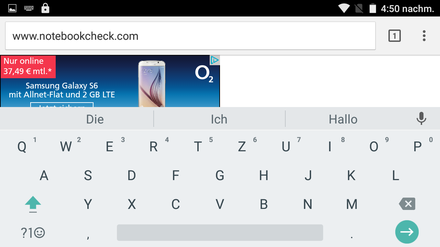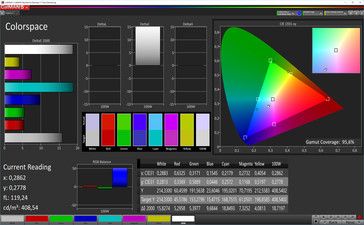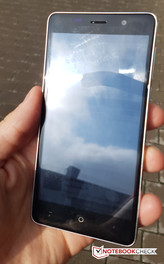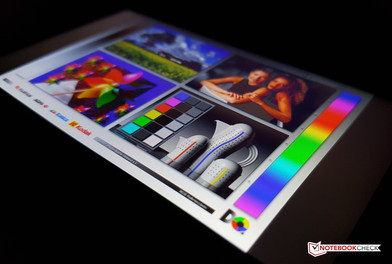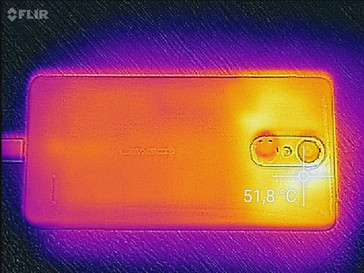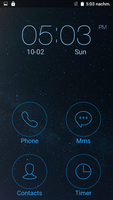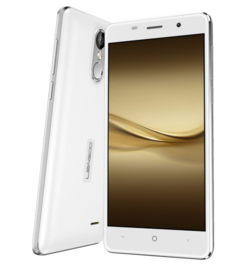Leagoo M5 Smartphone Review
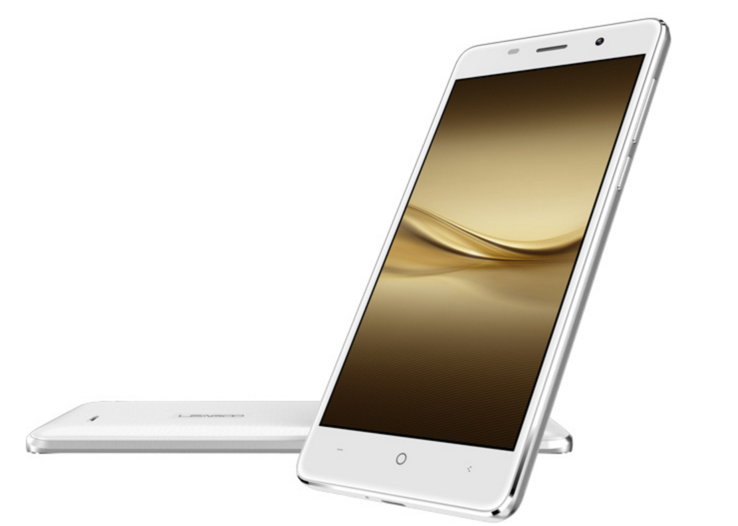
For the original German review, see here.
Leagoo's M5 is now available in Germany via importers at a street price of around 65 Euros (~$72; incl. shipping). Despite the low purchase price, potential buyers will get a very well-equipped entry-level handset. Some twice as expensive rivals do not have an expandable 16 GB internal storage, 2 GB of RAM, a fingerprint sensor, and a removable battery. Furthermore, the M5 is equipped with an HD IPS panel, dual-SIM slots, a MediaTek quad-core CPU, and a particularly resistant casing build.
Potential rivals in the entry-level sector include devices such as Wiko's Robby, Archos' 50 Platinum 4G, Ulefone's Metal, and Wiko's Jerry. However, Archos' 50e Neon as well as both Oukitel's U7 Plus and K4000 Pro models come into question as alternatives in terms of price. The latter is also equipped with a particularly shatterproof screen.
Case
The shatterproof glass front of Leagoo's M5 is fitted into the casing with a light curve (2.5D bezel). The edges around the 5-inch display are relatively wide, which is also reflected in the screen-surface ratio of just 68.2%. Nevertheless, the 8.7-millimeter (~0.34 in) tall smartphone is pleasant to hold thanks to its compact size of 141.7 x 71.3 millimeters (~5.6 x 2.8 in). A solid metal bezel between the front and back makes the handset very robust.
The surface of the removable plastic back cover is lightly rubberized and can be dented slightly. The 16 GB of internal storage can be expanded via micro-SD and the battery can be replaced after removing the back cover. The controls for volume and power are fitted rather loosely and their pressure points could have been better defined.
Considering the handset's price, the build quality and stability of the M5's casing is quite compelling and on a very good level. The weight of Leagoo's M5 is, however, a bit too high with 178 grams (~6.3 oz) for a smartphone of this size.
Connectivity
The internal eMMC storage has a capacity of 16 GB. The user has almost 10.6 GB available after initial use. Furthermore, applications can be moved to a (max. 128 GB) micro-SD card via A2SD. The micro-USB 2.0 port on the casing's lower edge can be used for recharging the smartphone and data sharing with a computer. However, peripherals cannot be connected via an OTG adapter (on the go).
Leagoo's M5 also features an FM radio, an active fingerprint scanner for unlocking the handset, as well as a classic 3.5-millimeter jack. A notification LED is not installed.
Software
Leagoo uses the Freeme OS 6.0 based on the relatively up-to-date Google Android 6.0 Marshmallow platform for its system software. Although the Freeme OS maintains the fundamental structures of Android, the custom ROM does not look very much like Google's standard Android. The app and folder design, as well as the missing app drawer, correspond to the design language of the alternative operating system.
The user can alter the design via the company's Theme Store, and change it in a short time by shaking the handset. Additional features, such as gesture control, are also implemented in the system.
Communication and GPS
The dual-SIM smartphone accesses the mobile Internet with up to two micro-SIM cards. However, neither slot supports any LTE frequency bands - only quad-band GSM and tri-band UMTS are supported. Furthermore, one slot is limited to 2G connections in dual-SIM mode.
Bluetooth version 4.0 is present for wireless communication between mobile end devices.
The integrated Wi-Fi module supports only the IEEE 802.11 b/g/n standards. The M5 reached similar speeds as the comparison devices in the practical test. Our measurements using the Linksys EA8500 reference router resulted in solid transmission rates in both receive and transmit. The reception performance is somewhat weak in everyday use, and the Wi-Fi signal to the router was sometimes lost. The attenuation of just under -41 dBm in the router's direct vicinity (Telekom Speedport, W921V) is good for an entry-level handset.
| Networking | |
| iperf Server (receive) TCP 1 m | |
| Xiaomi Mi 5 | |
| Ulefone Metal | |
| Archos 50 Platinum 4G | |
| Oukitel U7 Plus | |
| Leagoo M5 | |
| Archos 50e Neon | |
| iperf Client (transmit) TCP 1 m | |
| Xiaomi Mi 5 | |
| Ulefone Metal | |
| Oukitel U7 Plus | |
| Leagoo M5 | |
| Archos 50 Platinum 4G | |
| Archos 50e Neon | |
Leagoo's M5 uses the GPS satellite navigation system for quickly determining the position with an accuracy of 3 meters (~10 ft) outdoors. Tracking is not possible indoors. In addition, we tested the accuracy on a good 12 kilometer (~7.4 mi) bike ride and compared the outcomes with Garmin's Edge 500 professional navigation system. Ultimately, a discrepancy of almost 180 meters (~197 yd) is recorded between the entry-level smartphone and the professional device. This discrepancy should not be a problem for everyday navigation tasks.
Telephone and Call Quality
The voice quality and intelligibility via the M5's earpiece are satisfactory. The installed microphone is also convincing; the voice is transmitted clearly and articulately.
Leagoo relies on the Android standard phone application, which provides all the important features such as favorites, a call list, a keypad, and direct access to the contact database.
Cameras
An 8-megapixel primary camera is installed on the M5's rear. It has a light-sensitive aperture of f/2.0 and a focal length of 35 millimeters (~1.38 in). Considering the price, the photo quality in good light conditions is satisfactory. However, Leagoo's smartphone lacks a bit of sharpness compared with the rivals. As soon as scenes are photographed in sunlight, all bright areas are visibly overexposed. Furthermore, the dynamic range is too limited in the photos. Thus, the pictures clearly darken in very different light conditions. Intense image noise and a visible blurriness can be observed in low-light conditions.
The front-facing camera's resolution of 5 megapixels offers a sufficient quality and reproduction of details for selfies. However, its light sensitivity and image dynamic is not very high. The M5 records videos at a maximum resolution of 1080p at 30 frames per second.
Accessories and Warranty
In addition to a modular 5-watt charger (5V, 1A), a USB cable and the usual brochures are included for Leagoo's M5.
According to the warranty card in the box, the manufacturer's warranty applies for 12 months from date of purchase. Please see our Guarantees, Return Policies & Warranties FAQ for country-specific information.
Input Devices and Handling
The handset is controlled via three touch-sensitive, unlit buttons below the screen. The capacitive multi-touchscreen (3 fingers) is responsive into the corners, has pleasant gliding qualities, and is user-friendly.
In addition to a "double tap to wake" gesture, the M5 can also be unlocked via a fingerprint. The active fingerprint scanner on the handset's back did not really function reliably or quickly in the test. Nevertheless, it provides a certain convenience especially since the sensor can be mapped with additional features, such as camera release.
Display
With a resolution of 1280x720 pixels on a 5-inch LC display, the M5 offers sufficient sharpness for everyday use, and the achieved pixel density of 294 PPI is on par with other entry-level smartphones.
Leagoo's smartphone achieves a maximum brightness of 402 cd/m² on a completely white surface using manual brightness setting. The illumination of 92% is homogeneous for a handset from this price range. The IPS panel even shines with up to 416 cd/m² when dark and bright areas are distributed evenly over the screen (average picture level: APL50) in a realistic scenario.
| |||||||||||||||||||||||||
Brightness Distribution: 92 %
Center on Battery: 401 cd/m²
Contrast: 757:1 (Black: 0.53 cd/m²)
ΔE ColorChecker Calman: 9.7 | ∀{0.5-29.43 Ø4.83}
ΔE Greyscale Calman: 13.3 | ∀{0.09-98 Ø5.1}
Gamma: 2.3
CCT: 10359 K
| Leagoo M5 IPS, 1280x720, 5" | Oukitel U7 Plus IPS, 1280x720, 5.5" | Oukitel K4000 Pro IPS, 1280x720, 5" | Ulefone Metal IPS, 1280x720, 5" | Wiko Jerry IPS, 854x480, 5" | Wiko Robby IPS, 1280x720, 5.5" | Archos 50 Platinum 4G IPS, 1280x720, 5" | Archos 50e Neon TFT, 854x480, 5" | Xiaomi Mi 5 IPS, 1920x1080, 5.2" | |
|---|---|---|---|---|---|---|---|---|---|
| Screen | 16% | 17% | 5% | 16% | 31% | 9% | 0% | 45% | |
| Brightness middle | 401 | 462 15% | 360 -10% | 312 -22% | 432 8% | 621 55% | 344 -14% | 443 10% | 598 49% |
| Brightness | 387 | 437 13% | 367 -5% | 315 -19% | 436 13% | 576 49% | 349 -10% | 430 11% | 566 46% |
| Brightness Distribution | 92 | 91 -1% | 89 -3% | 87 -5% | 91 -1% | 88 -4% | 89 -3% | 94 2% | 90 -2% |
| Black Level * | 0.53 | 0.58 -9% | 0.36 32% | 0.56 -6% | 0.57 -8% | 0.73 -38% | 0.65 -23% | 0.38 28% | 0.51 4% |
| Contrast | 757 | 797 5% | 1000 32% | 557 -26% | 758 0% | 851 12% | 529 -30% | 1166 54% | 1173 55% |
| Colorchecker dE 2000 * | 9.7 | 7.5 23% | 9.01 7% | 6.8 30% | 7 28% | 4.7 52% | 5.8 40% | 13.9 -43% | 3.5 64% |
| Colorchecker dE 2000 max. * | 22.3 | 12.8 43% | 12.58 44% | 14 37% | 12.4 44% | 9.4 58% | 10.7 52% | 29.5 -32% | 6.1 73% |
| Greyscale dE 2000 * | 13.3 | 8.5 36% | 8.67 35% | 7.1 47% | 7.6 43% | 5.2 61% | 5.7 57% | 17.3 -30% | 3.5 74% |
| Gamma | 2.3 96% | 2.54 87% | 2.66 83% | 2.77 79% | 2.1 105% | 2.51 88% | 2.1 105% | 2.93 75% | 2.29 96% |
| CCT | 10359 63% | 8914 73% | 7641 85% | 7402 88% | 8368 78% | 7505 87% | 7792 83% | 22878 28% | 6532 100% |
* ... smaller is better
Both the black level and the reproduced contrast ratio of 757:1 are in a range typical of entry-level smartphones. However, we did not accomplish a contrast of 900:1, as Leagoo claims, even in the APL50 test. Here, we measured a ratio of 770:1 at a black level of 0.54 cd/m². The average DeltaE deviations from the sRGB color space are very high with 9.7 (colors) and 11.3 (grayscale). The ideal range starts at rates <3. At the same time, the color temperature of 10359 Kelvin is very high compared with the ideal temperature of 6500K, and a minor bluish tint is visible in the image reproduction.
The liquid crystal display in the M5 also does a convincing job in the outdoors. The contents are difficult to read only in direct sunlight. As typical of IPS, the viewing angles are on a good level and the colors of the contents are relatively accurate even at very flat viewing angles.
Display Response Times
| ↔ Response Time Black to White | ||
|---|---|---|
| 28 ms ... rise ↗ and fall ↘ combined | ↗ 11 ms rise | |
| ↘ 17 ms fall | ||
| The screen shows relatively slow response rates in our tests and may be too slow for gamers. In comparison, all tested devices range from 0.1 (minimum) to 240 (maximum) ms. » 70 % of all devices are better. This means that the measured response time is worse than the average of all tested devices (20.5 ms). | ||
| ↔ Response Time 50% Grey to 80% Grey | ||
| 33 ms ... rise ↗ and fall ↘ combined | ↗ 14 ms rise | |
| ↘ 19 ms fall | ||
| The screen shows slow response rates in our tests and will be unsatisfactory for gamers. In comparison, all tested devices range from 0.165 (minimum) to 636 (maximum) ms. » 42 % of all devices are better. This means that the measured response time is similar to the average of all tested devices (32.1 ms). | ||
Screen Flickering / PWM (Pulse-Width Modulation)
| Screen flickering / PWM not detected | |||
In comparison: 53 % of all tested devices do not use PWM to dim the display. If PWM was detected, an average of 8327 (minimum: 5 - maximum: 343500) Hz was measured. | |||
Performance
Leagoo's M5 is equipped with MediaTek's MT6580M SoC (system on a chip). It is built in 28 nm and has a quad-core Cortex A7 processor. The computing power convinces with a solid system performance and browser speed in everyday use. However, perceivable stutters and lags, as well as delays when launching apps, are noticed as expected. The benchmarks show a rather average performance on par with Archos' 50e Neon based on the same SoC. In relation to the performance capacities of the comparison devices in a similar price range, the M5 is only mediocre.
The determined speed of the internal storage in read and especially in write is not very high with 134 MB/s and 12 MB/s although the rivals present similar access times - with the exception of UleFone's Metal. The measured speeds of the micro-SD card reader that we tested with our Toshiba Exceria Pro M401 (max. 95 MB per second in read, and max. 80 MB per second in write) reference card match match this. The read and write access rates are also only average here.
| AndroBench 3-5 | |
| Sequential Write 256KB SDCard (sort by value) | |
| Leagoo M5 | |
| Oukitel U7 Plus | |
| Ulefone Metal | |
| Wiko Jerry | |
| Wiko Robby | |
| Archos 50 Platinum 4G | |
| Archos 50e Neon | |
| Sequential Read 256KB SDCard (sort by value) | |
| Leagoo M5 | |
| Oukitel U7 Plus | |
| Ulefone Metal | |
| Wiko Jerry | |
| Wiko Robby | |
| Archos 50 Platinum 4G | |
| Archos 50e Neon | |
| Random Write 4KB (sort by value) | |
| Leagoo M5 | |
| Oukitel U7 Plus | |
| Oukitel K4000 Pro | |
| Ulefone Metal | |
| Wiko Jerry | |
| Wiko Robby | |
| Archos 50 Platinum 4G | |
| Archos 50e Neon | |
| Xiaomi Mi 5 | |
| Random Read 4KB (sort by value) | |
| Leagoo M5 | |
| Oukitel U7 Plus | |
| Oukitel K4000 Pro | |
| Ulefone Metal | |
| Wiko Jerry | |
| Wiko Robby | |
| Archos 50 Platinum 4G | |
| Archos 50e Neon | |
| Xiaomi Mi 5 | |
| Sequential Write 256KB (sort by value) | |
| Leagoo M5 | |
| Oukitel U7 Plus | |
| Oukitel K4000 Pro | |
| Ulefone Metal | |
| Wiko Jerry | |
| Wiko Robby | |
| Archos 50 Platinum 4G | |
| Archos 50e Neon | |
| Xiaomi Mi 5 | |
| Sequential Read 256KB (sort by value) | |
| Leagoo M5 | |
| Oukitel U7 Plus | |
| Oukitel K4000 Pro | |
| Ulefone Metal | |
| Wiko Jerry | |
| Wiko Robby | |
| Archos 50 Platinum 4G | |
| Archos 50e Neon | |
| Xiaomi Mi 5 | |
| AnTuTu v6 - Total Score (sort by value) | |
| Leagoo M5 | |
| Oukitel U7 Plus | |
| Oukitel K4000 Pro | |
| Ulefone Metal | |
| Wiko Jerry | |
| Wiko Robby | |
| Archos 50 Platinum 4G | |
| Archos 50e Neon | |
| Xiaomi Mi 5 | |
| 3DMark | |
| 1280x720 offscreen Ice Storm Unlimited Score (sort by value) | |
| Leagoo M5 | |
| Oukitel U7 Plus | |
| Oukitel K4000 Pro | |
| Ulefone Metal | |
| Wiko Jerry | |
| Wiko Robby | |
| Archos 50 Platinum 4G | |
| Archos 50e Neon | |
| Xiaomi Mi 5 | |
| 1280x720 offscreen Ice Storm Unlimited Graphics Score (sort by value) | |
| Leagoo M5 | |
| Oukitel U7 Plus | |
| Oukitel K4000 Pro | |
| Ulefone Metal | |
| Wiko Jerry | |
| Wiko Robby | |
| Archos 50 Platinum 4G | |
| Archos 50e Neon | |
| Xiaomi Mi 5 | |
| 1280x720 offscreen Ice Storm Unlimited Physics (sort by value) | |
| Leagoo M5 | |
| Oukitel U7 Plus | |
| Oukitel K4000 Pro | |
| Ulefone Metal | |
| Wiko Jerry | |
| Wiko Robby | |
| Archos 50 Platinum 4G | |
| Archos 50e Neon | |
| Xiaomi Mi 5 | |
| 2560x1440 Sling Shot OpenGL ES 3.0 (sort by value) | |
| Oukitel U7 Plus | |
| Oukitel K4000 Pro | |
| Ulefone Metal | |
| Xiaomi Mi 5 | |
| 2560x1440 Sling Shot OpenGL ES 3.0 Graphics (sort by value) | |
| Oukitel U7 Plus | |
| Oukitel K4000 Pro | |
| Ulefone Metal | |
| Xiaomi Mi 5 | |
| 2560x1440 Sling Shot OpenGL ES 3.0 Physics (sort by value) | |
| Oukitel U7 Plus | |
| Oukitel K4000 Pro | |
| Ulefone Metal | |
| Xiaomi Mi 5 | |
| GFXBench (DX / GLBenchmark) 2.7 | |
| T-Rex Onscreen (sort by value) | |
| Leagoo M5 | |
| Oukitel U7 Plus | |
| Oukitel K4000 Pro | |
| Ulefone Metal | |
| Wiko Jerry | |
| Wiko Robby | |
| Archos 50 Platinum 4G | |
| Archos 50e Neon | |
| Xiaomi Mi 5 | |
| 1920x1080 T-Rex Offscreen (sort by value) | |
| Leagoo M5 | |
| Oukitel U7 Plus | |
| Ulefone Metal | |
| Wiko Jerry | |
| Wiko Robby | |
| Archos 50 Platinum 4G | |
| Archos 50e Neon | |
| Xiaomi Mi 5 | |
| PCMark for Android - Work performance score (sort by value) | |
| Leagoo M5 | |
| Oukitel U7 Plus | |
| Oukitel K4000 Pro | |
| Ulefone Metal | |
| Wiko Jerry | |
| Wiko Robby | |
| Archos 50 Platinum 4G | |
| Archos 50e Neon | |
| Xiaomi Mi 5 | |
| BaseMark OS II | |
| Overall (sort by value) | |
| Leagoo M5 | |
| Oukitel U7 Plus | |
| Oukitel K4000 Pro | |
| Ulefone Metal | |
| Wiko Jerry | |
| Wiko Robby | |
| Archos 50 Platinum 4G | |
| Archos 50e Neon | |
| Xiaomi Mi 5 | |
| System (sort by value) | |
| Leagoo M5 | |
| Oukitel U7 Plus | |
| Oukitel K4000 Pro | |
| Ulefone Metal | |
| Wiko Jerry | |
| Wiko Robby | |
| Archos 50 Platinum 4G | |
| Archos 50e Neon | |
| Xiaomi Mi 5 | |
| Memory (sort by value) | |
| Leagoo M5 | |
| Oukitel U7 Plus | |
| Oukitel K4000 Pro | |
| Ulefone Metal | |
| Wiko Jerry | |
| Wiko Robby | |
| Archos 50 Platinum 4G | |
| Archos 50e Neon | |
| Xiaomi Mi 5 | |
| Graphics (sort by value) | |
| Leagoo M5 | |
| Oukitel U7 Plus | |
| Oukitel K4000 Pro | |
| Ulefone Metal | |
| Wiko Jerry | |
| Wiko Robby | |
| Archos 50 Platinum 4G | |
| Archos 50e Neon | |
| Xiaomi Mi 5 | |
| Web (sort by value) | |
| Leagoo M5 | |
| Oukitel U7 Plus | |
| Oukitel K4000 Pro | |
| Ulefone Metal | |
| Wiko Jerry | |
| Wiko Robby | |
| Archos 50 Platinum 4G | |
| Archos 50e Neon | |
| Xiaomi Mi 5 | |
| Geekbench 4.0 | |
| 64 Bit Multi-Core Score (sort by value) | |
| Leagoo M5 | |
| Oukitel U7 Plus | |
| Ulefone Metal | |
| Archos 50 Platinum 4G | |
| 64 Bit Single-Core Score (sort by value) | |
| Leagoo M5 | |
| Oukitel U7 Plus | |
| Ulefone Metal | |
| Archos 50 Platinum 4G | |
| JetStream 1.1 - Total Score (sort by value) | |
| Leagoo M5 | |
| Oukitel U7 Plus | |
| Oukitel K4000 Pro | |
| Ulefone Metal | |
| Wiko Jerry | |
| Wiko Robby | |
| Archos 50 Platinum 4G | |
| Archos 50e Neon | |
| Xiaomi Mi 5 | |
| Octane V2 - Total Score (sort by value) | |
| Leagoo M5 | |
| Oukitel U7 Plus | |
| Oukitel K4000 Pro | |
| Ulefone Metal | |
| Wiko Jerry | |
| Wiko Robby | |
| Archos 50 Platinum 4G | |
| Archos 50e Neon | |
| Xiaomi Mi 5 | |
| Mozilla Kraken 1.1 - Total (sort by value) | |
| Leagoo M5 | |
| Oukitel U7 Plus | |
| Oukitel K4000 Pro | |
| Ulefone Metal | |
| Wiko Jerry | |
| Wiko Robby | |
| Archos 50 Platinum 4G | |
| Archos 50e Neon | |
| Xiaomi Mi 5 | |
* ... smaller is better
Games
The Mali-400 MP2 graphics unit integrated into MediaTek's MT6580M cannot render graphic-driven games such as "Asphalt 8: Airborne" or "N.O.V.A 3" in either medium or high details. Thus, low gaming details should be selected in the setting menus for a largely smooth gameplay. However, long loading times will still be the rule then.
Emissions
Temperature
The temperature development of Leagoo's M5 of over 48 °C (~118 °F) is definitely too high - especially since the maximum rates were measured on the handset's back (Stability Test > 1h). With surface temperatures of up to 39.7 °C (~103 °F) while idling, the waste heat is higher than in some other entry-level smartphones during load. The upper area in particular heats up annoyingly in computing-driven applications and games, and therefore, we did not use, for example, the fingerprint scanner because of the high surface temperatures.
(-) The maximum temperature on the upper side is 46.4 °C / 116 F, compared to the average of 35.1 °C / 95 F, ranging from 21.9 to 63.7 °C for the class Smartphone.
(-) The bottom heats up to a maximum of 48.1 °C / 119 F, compared to the average of 33.9 °C / 93 F
(-) In idle usage, the average temperature for the upper side is 38.4 °C / 101 F, compared to the device average of 32.9 °C / 91 F.
Speaker
The rear-sided speaker's almost 85 dB(A) is sufficiently powerful, but the playback quality sounds tinny when increasing the volume. Music is almost inaudible as soon as a finger covers the rear-sided speaker opening. The sound impression in the audible range is hardly linear. As typical for smartphones, basses are not perceptible.
The mono speaker's playback quality did not convince us.
Leagoo M5 audio analysis
(+) | speakers can play relatively loud (84.9 dB)
Bass 100 - 315 Hz
(-) | nearly no bass - on average 41.1% lower than median
(+) | bass is linear (6.2% delta to prev. frequency)
Mids 400 - 2000 Hz
(±) | reduced mids - on average 7.3% lower than median
(±) | linearity of mids is average (9.1% delta to prev. frequency)
Highs 2 - 16 kHz
(±) | higher highs - on average 6.1% higher than median
(+) | highs are linear (3.2% delta to prev. frequency)
Overall 100 - 16.000 Hz
(-) | overall sound is not linear (30% difference to median)
Compared to same class
» 77% of all tested devices in this class were better, 4% similar, 19% worse
» The best had a delta of 12%, average was 36%, worst was 134%
Compared to all devices tested
» 87% of all tested devices were better, 3% similar, 10% worse
» The best had a delta of 4%, average was 24%, worst was 134%
Oukitel U7 Plus audio analysis
(±) | speaker loudness is average but good (81.6 dB)
Bass 100 - 315 Hz
(-) | nearly no bass - on average 31.6% lower than median
(±) | linearity of bass is average (7.4% delta to prev. frequency)
Mids 400 - 2000 Hz
(±) | reduced mids - on average 6.1% lower than median
(±) | linearity of mids is average (9.1% delta to prev. frequency)
Highs 2 - 16 kHz
(±) | higher highs - on average 9.3% higher than median
(±) | linearity of highs is average (9.2% delta to prev. frequency)
Overall 100 - 16.000 Hz
(-) | overall sound is not linear (34.2% difference to median)
Compared to same class
» 84% of all tested devices in this class were better, 1% similar, 15% worse
» The best had a delta of 12%, average was 36%, worst was 134%
Compared to all devices tested
» 92% of all tested devices were better, 1% similar, 6% worse
» The best had a delta of 4%, average was 24%, worst was 134%
Ulefone Metal audio analysis
(±) | speaker loudness is average but good (76.4 dB)
Bass 100 - 315 Hz
(-) | nearly no bass - on average 25.6% lower than median
(-) | bass is not linear (15.5% delta to prev. frequency)
Mids 400 - 2000 Hz
(+) | balanced mids - only 3.7% away from median
(±) | linearity of mids is average (8.2% delta to prev. frequency)
Highs 2 - 16 kHz
(±) | higher highs - on average 5.6% higher than median
(+) | highs are linear (6.5% delta to prev. frequency)
Overall 100 - 16.000 Hz
(±) | linearity of overall sound is average (24.4% difference to median)
Compared to same class
» 56% of all tested devices in this class were better, 7% similar, 36% worse
» The best had a delta of 12%, average was 36%, worst was 134%
Compared to all devices tested
» 73% of all tested devices were better, 6% similar, 22% worse
» The best had a delta of 4%, average was 24%, worst was 134%
Archos 50 Platinum 4G audio analysis
(±) | speaker loudness is average but good (81.2 dB)
Bass 100 - 315 Hz
(-) | nearly no bass - on average 39% lower than median
(±) | linearity of bass is average (8.5% delta to prev. frequency)
Mids 400 - 2000 Hz
(±) | reduced mids - on average 8.1% lower than median
(±) | linearity of mids is average (9.6% delta to prev. frequency)
Highs 2 - 16 kHz
(+) | balanced highs - only 2.3% away from median
(+) | highs are linear (3.4% delta to prev. frequency)
Overall 100 - 16.000 Hz
(-) | overall sound is not linear (30.6% difference to median)
Compared to same class
» 78% of all tested devices in this class were better, 4% similar, 18% worse
» The best had a delta of 12%, average was 36%, worst was 134%
Compared to all devices tested
» 88% of all tested devices were better, 3% similar, 9% worse
» The best had a delta of 4%, average was 24%, worst was 134%
Frequency diagram in comparison (check boxes above can be turned on/off!)
Energy Management
Power Consumption
The M5's power consumption in both idle and load is a bit too high. Devices with similar technical specifications as Leagoo's smartphone (Wiko's Robby or Archos' 50e Neon) present a better energy management. All comparison devices are considerably more frugal, especially during maximum load.
| Off / Standby | |
| Idle | |
| Load |
|
Key:
min: | |
| Leagoo M5 2300 mAh | Oukitel U7 Plus 2500 mAh | Oukitel K4000 Pro 4600 mAh | Ulefone Metal 3050 mAh | Wiko Jerry 2000 mAh | Wiko Robby 2500 mAh | Archos 50 Platinum 4G 2200 mAh | Archos 50e Neon 2200 mAh | |
|---|---|---|---|---|---|---|---|---|
| Power Consumption | -2% | -65% | -15% | 14% | 7% | 31% | 27% | |
| Idle Minimum * | 0.81 | 0.86 -6% | 2.74 -238% | 1.41 -74% | 0.8 1% | 0.92 -14% | 0.59 27% | 0.56 31% |
| Idle Average * | 2.26 | 2.68 -19% | 3.92 -73% | 2.46 -9% | 2.02 11% | 2.12 6% | 1.68 26% | 1.58 30% |
| Idle Maximum * | 2.39 | 2.78 -16% | 4.05 -69% | 2.83 -18% | 2.19 8% | 2.34 2% | 1.79 25% | 1.8 25% |
| Load Average * | 6.97 | 5.33 24% | 4.84 31% | 5.15 26% | 5.02 28% | 5.3 24% | 4.22 39% | 5.22 25% |
| Load Maximum * | 7.03 | 6.49 8% | 5.42 23% | 7.05 -0% | 5.52 21% | 5.78 18% | 4.26 39% | 5.34 24% |
* ... smaller is better
Battery Runtime
Leagoo's M5 achieved a satisfactory runtime of 6 hours and 46 minutes in our practical Wi-Fi test (screen brightness set to 150 cd/m²), which places it in the midfield of our comparison devices. The Freeme OS has a separate ultra energy saving mode that limits apps' background activity and reduces the smartphone's connectivity for increasing the battery life. However, the handset's features are significantly reduced.
Since Quick Charge technology is not supported, roughly 2.5 hours are needed for recharging the 2300 mAh battery from 0 to 100 percent.
| Leagoo M5 2300 mAh | Oukitel U7 Plus 2500 mAh | Oukitel K4000 Pro 4600 mAh | Ulefone Metal 3050 mAh | Wiko Jerry 2000 mAh | Wiko Robby 2500 mAh | Archos 50 Platinum 4G 2200 mAh | Archos 50e Neon 2200 mAh | |
|---|---|---|---|---|---|---|---|---|
| Battery Runtime | ||||||||
| WiFi v1.3 | 406 | 366 -10% | 711 75% | 403 -1% | 475 17% | 712 75% | 384 -5% | 498 23% |
Pros
Cons
Verdict
Although our negative points outstrip the positives of Leagoo's M5, the entry-level device priced at just 65 Euros (~$73) is not inevitably a bad smartphone. The technical configuration and its resistance to external influences (even if we could not test this fact) are very much a purchase argument for this price range. However, other smartphones offer a better total package even though they have a higher purchase price. First and foremost, we would mention UleFone's Meta or UHANS' S1. Buyers not wanting to deal with importers might find a suitable alternative in Coolpad's Porto S or ZTE's Blade A452.
Too many points of criticism prevent us from giving Leagoo's M5 a purchase recommendation despite good technical specifications and a very low purchase price.
Leagoo M5
- 10/06/2016 v5.1 (old)
Marcus Herbrich



















